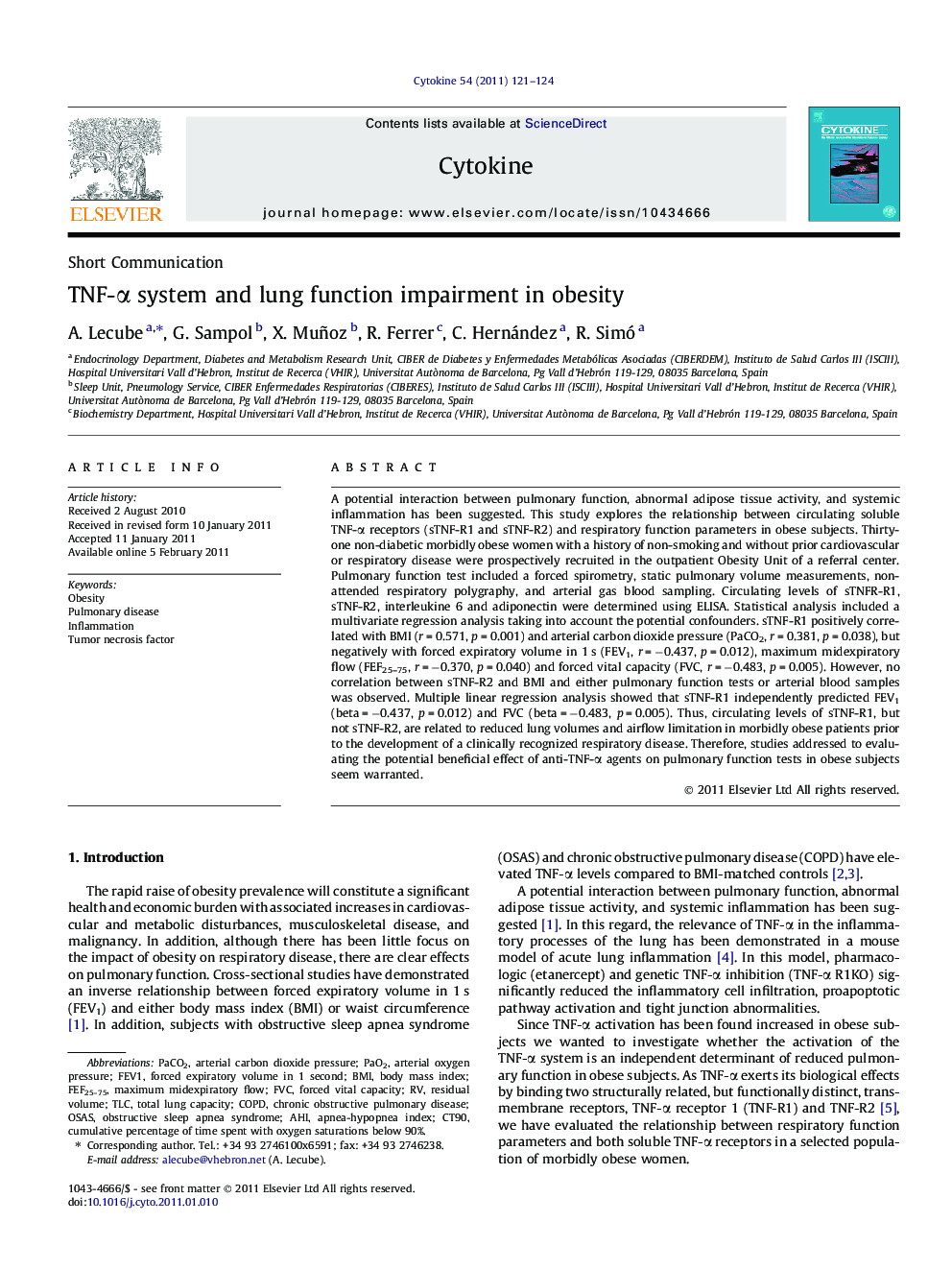| Article ID | Journal | Published Year | Pages | File Type |
|---|---|---|---|---|
| 5898450 | Cytokine | 2011 | 4 Pages |
Abstract
A potential interaction between pulmonary function, abnormal adipose tissue activity, and systemic inflammation has been suggested. This study explores the relationship between circulating soluble TNF-α receptors (sTNF-R1 and sTNF-R2) and respiratory function parameters in obese subjects. Thirty-one non-diabetic morbidly obese women with a history of non-smoking and without prior cardiovascular or respiratory disease were prospectively recruited in the outpatient Obesity Unit of a referral center. Pulmonary function test included a forced spirometry, static pulmonary volume measurements, non-attended respiratory polygraphy, and arterial gas blood sampling. Circulating levels of sTNFR-R1, sTNF-R2, interleukine 6 and adiponectin were determined using ELISA. Statistical analysis included a multivariate regression analysis taking into account the potential confounders. sTNF-R1 positively correlated with BMI (r = 0.571, p = 0.001) and arterial carbon dioxide pressure (PaCO2, r = 0.381, p = 0.038), but negatively with forced expiratory volume in 1 s (FEV1, r = â0.437, p = 0.012), maximum midexpiratory flow (FEF25-75, r = â0.370, p = 0.040) and forced vital capacity (FVC, r = â0.483, p = 0.005). However, no correlation between sTNF-R2 and BMI and either pulmonary function tests or arterial blood samples was observed. Multiple linear regression analysis showed that sTNF-R1 independently predicted FEV1 (beta = â0.437, p = 0.012) and FVC (beta = â0.483, p = 0.005). Thus, circulating levels of sTNF-R1, but not sTNF-R2, are related to reduced lung volumes and airflow limitation in morbidly obese patients prior to the development of a clinically recognized respiratory disease. Therefore, studies addressed to evaluating the potential beneficial effect of anti-TNF-α agents on pulmonary function tests in obese subjects seem warranted.
Keywords
PaCO2CT90OSASPaO2FEV1aHIFVCTLCFEF25–75inflammationPulmonary diseaseCOPDChronic obstructive pulmonary diseaseResidual volumeobstructive sleep apnea syndromeapnea-hypopnea indexbody mass indexBMIforced vital capacityTotal lung capacitytumor necrosis factorarterial oxygen pressurearterial carbon dioxide pressureforced expiratory volume in 1 secondObesity
Related Topics
Life Sciences
Biochemistry, Genetics and Molecular Biology
Endocrinology
Authors
A. Lecube, G. Sampol, X. Muñoz, R. Ferrer, C. Hernández, R. Simó,
